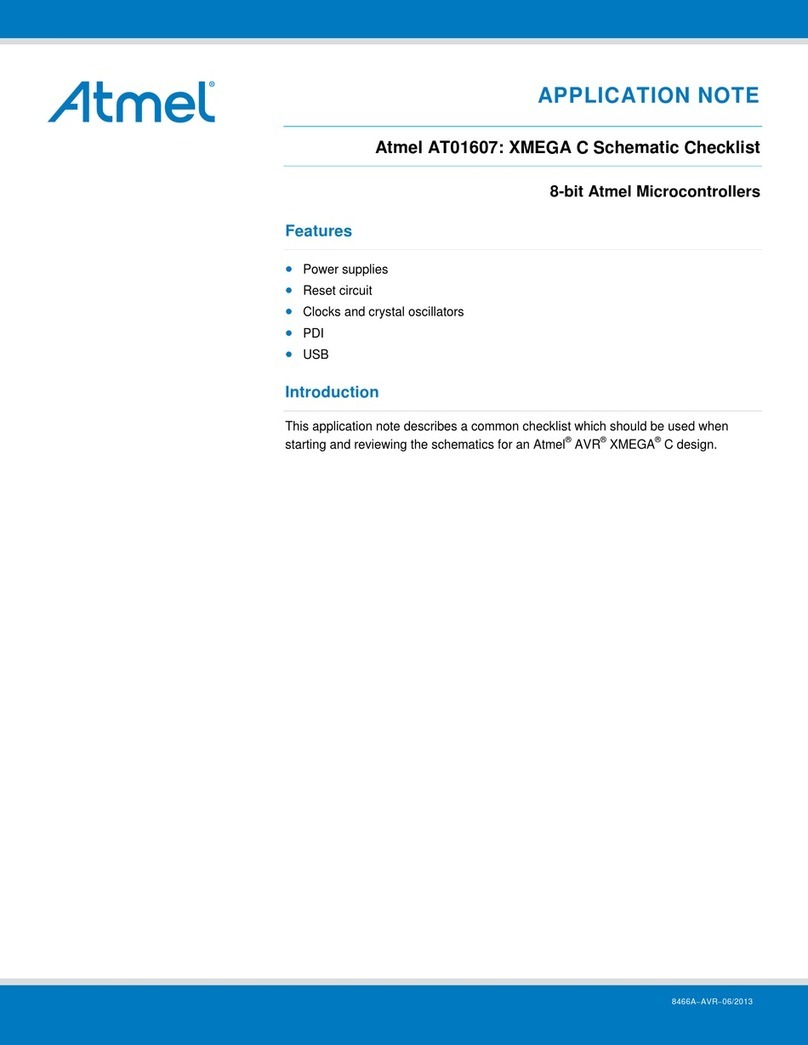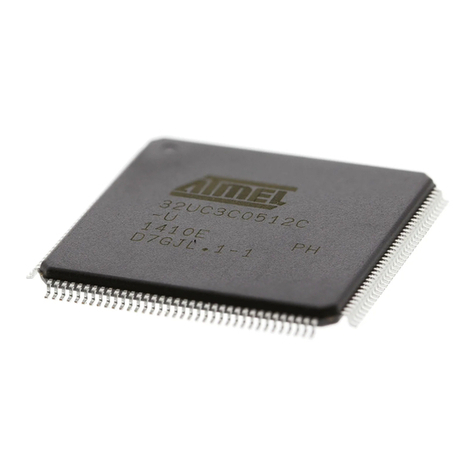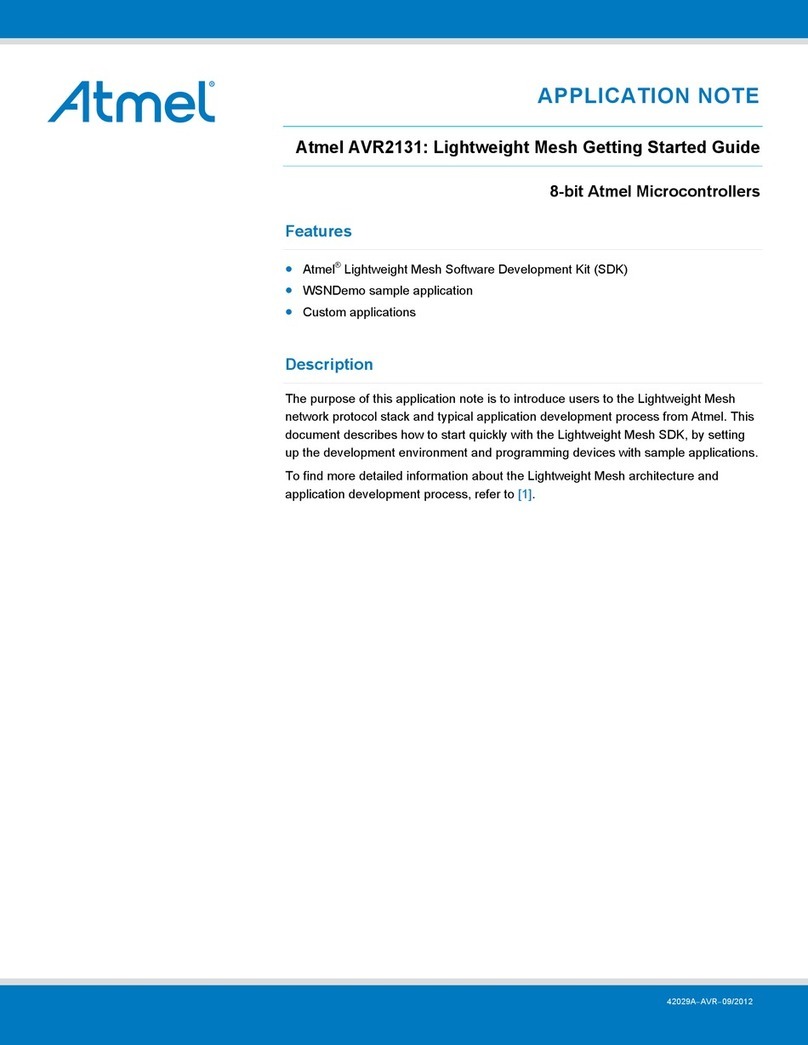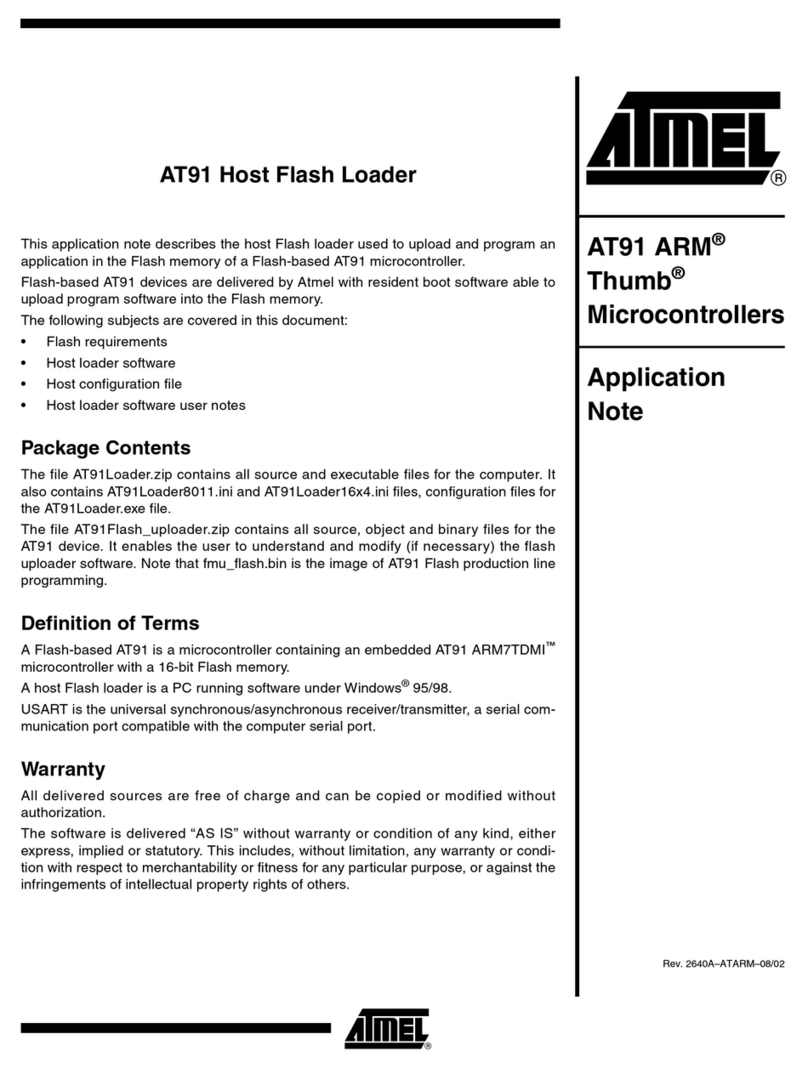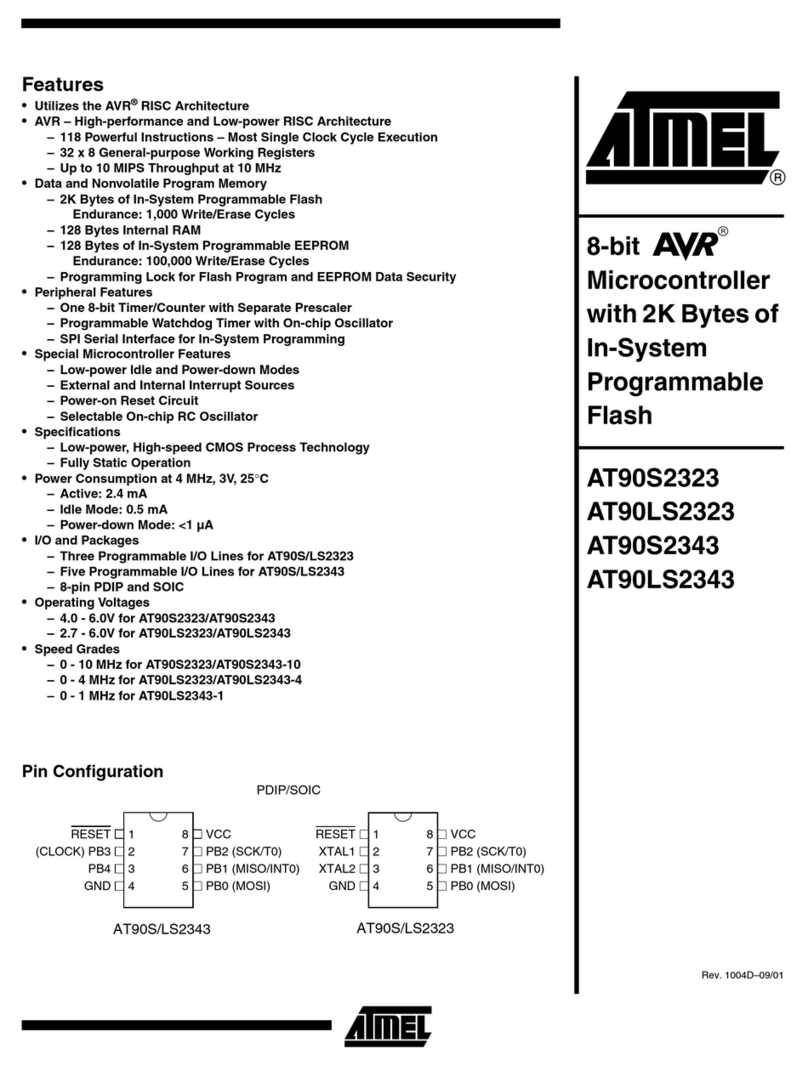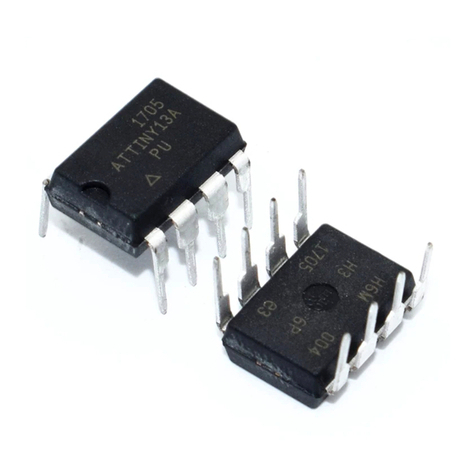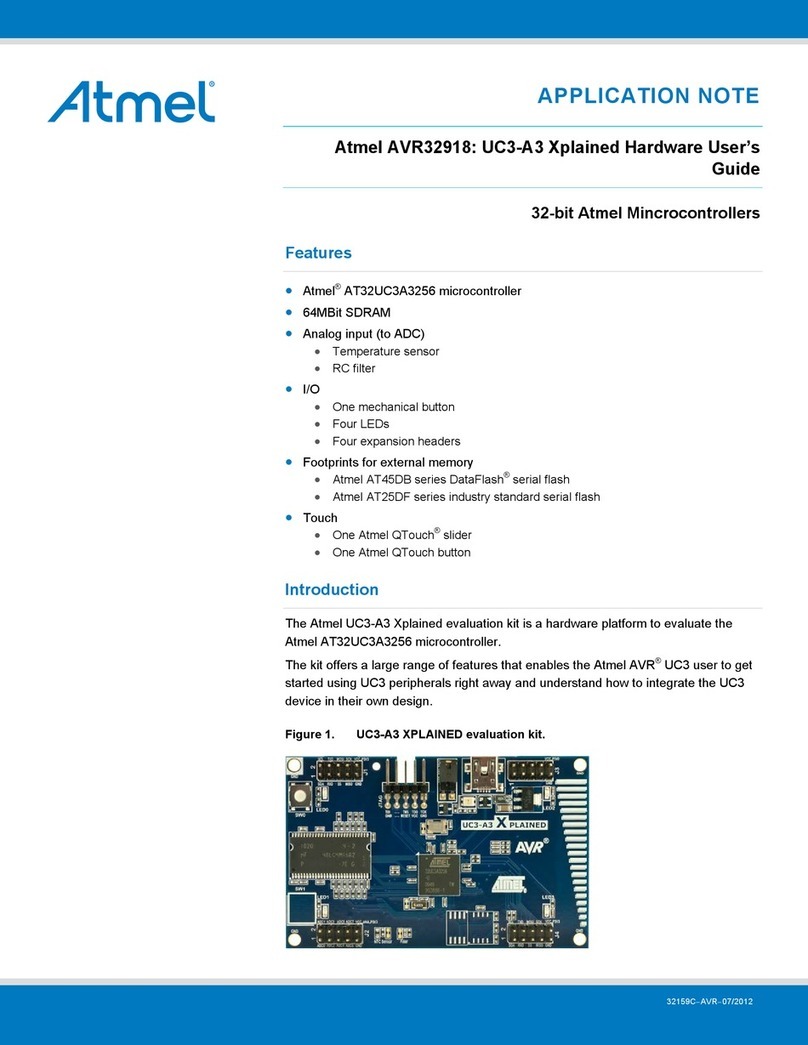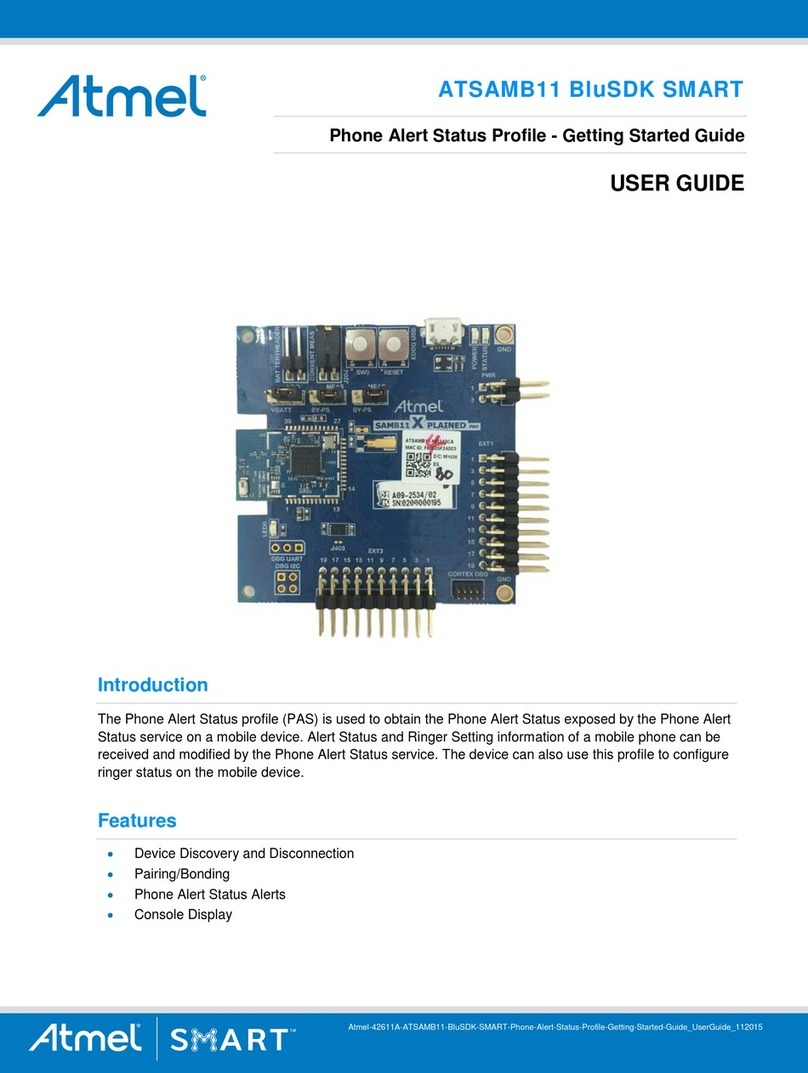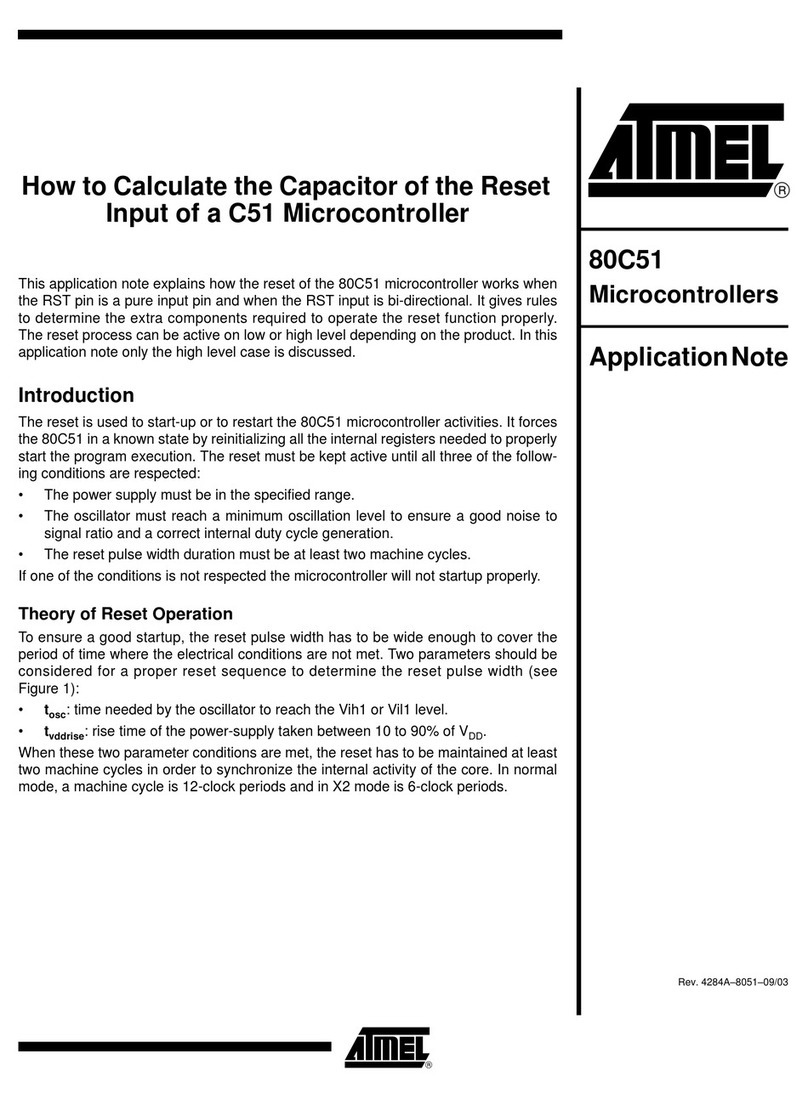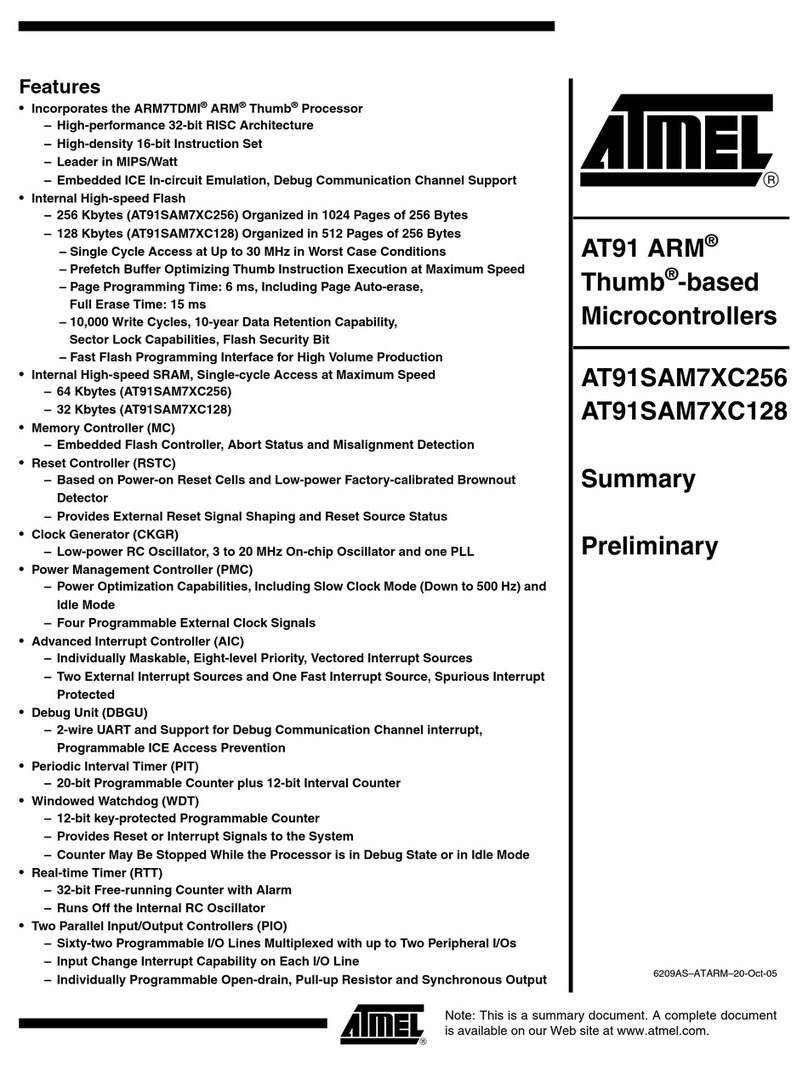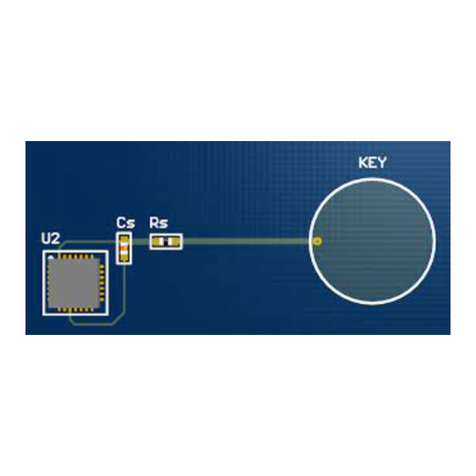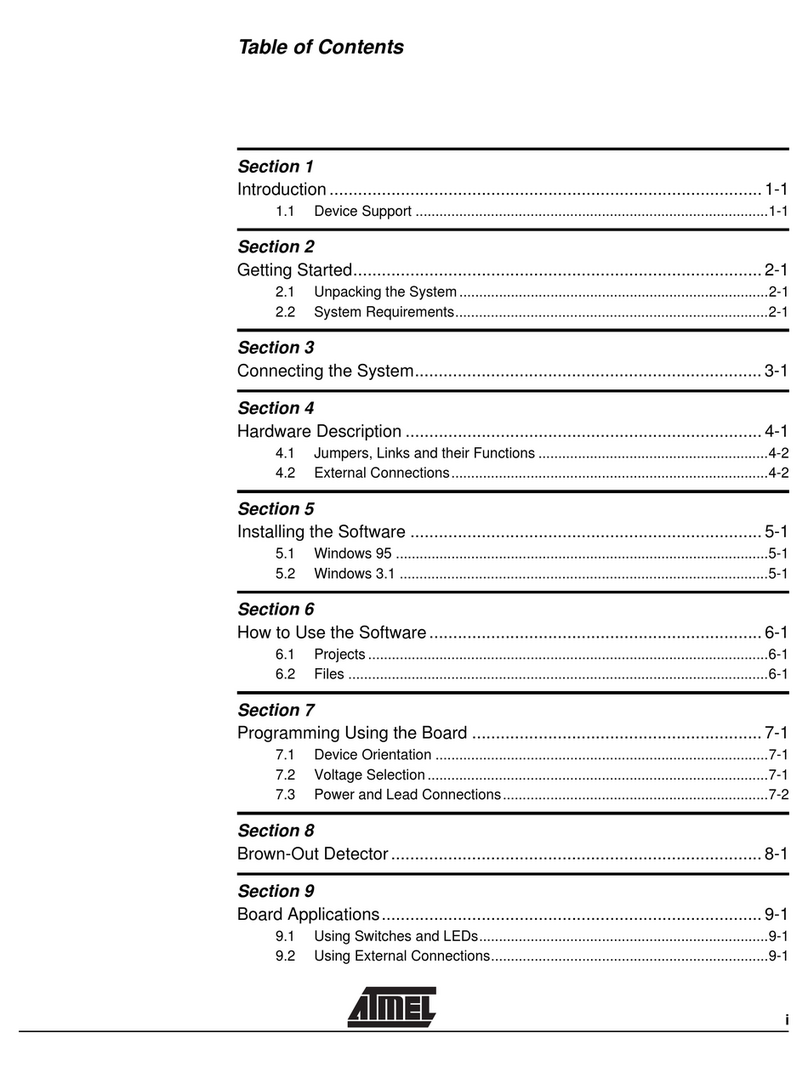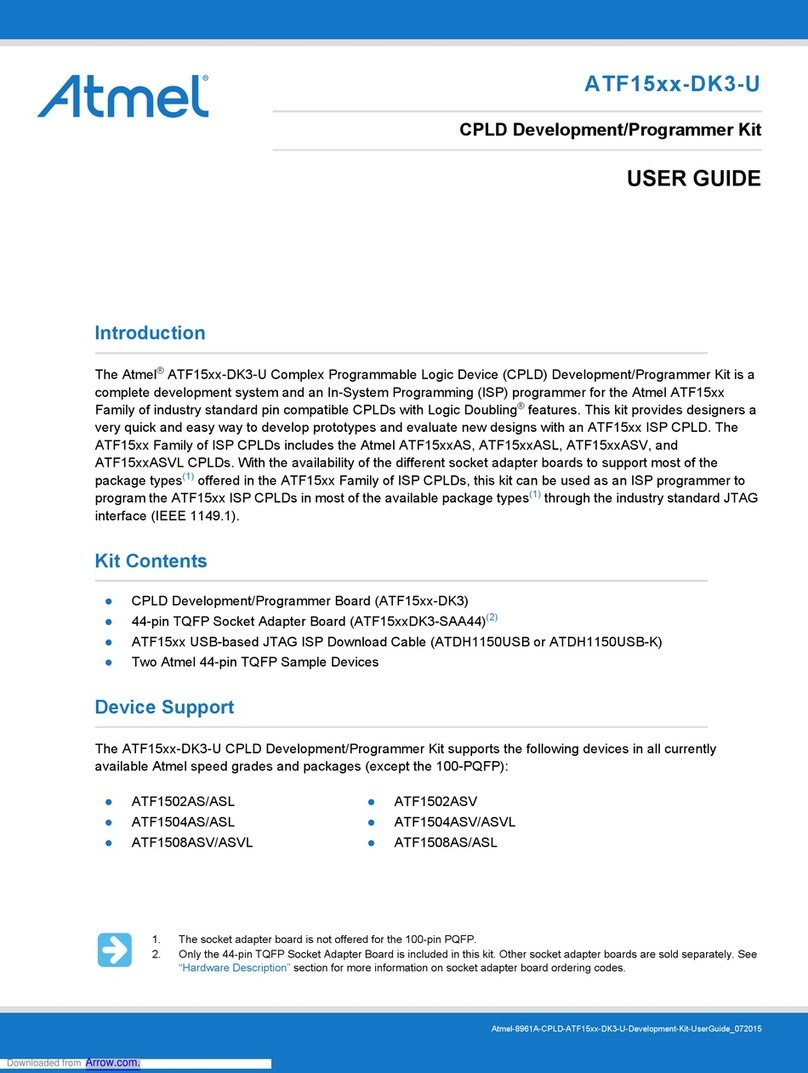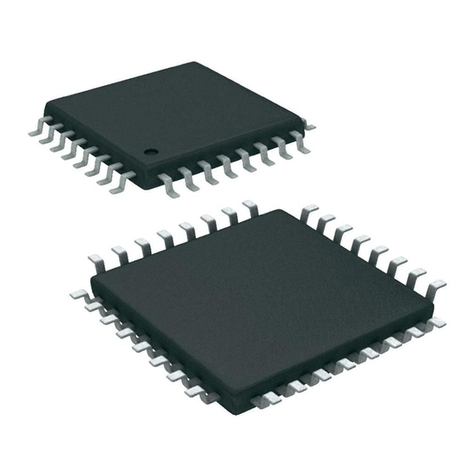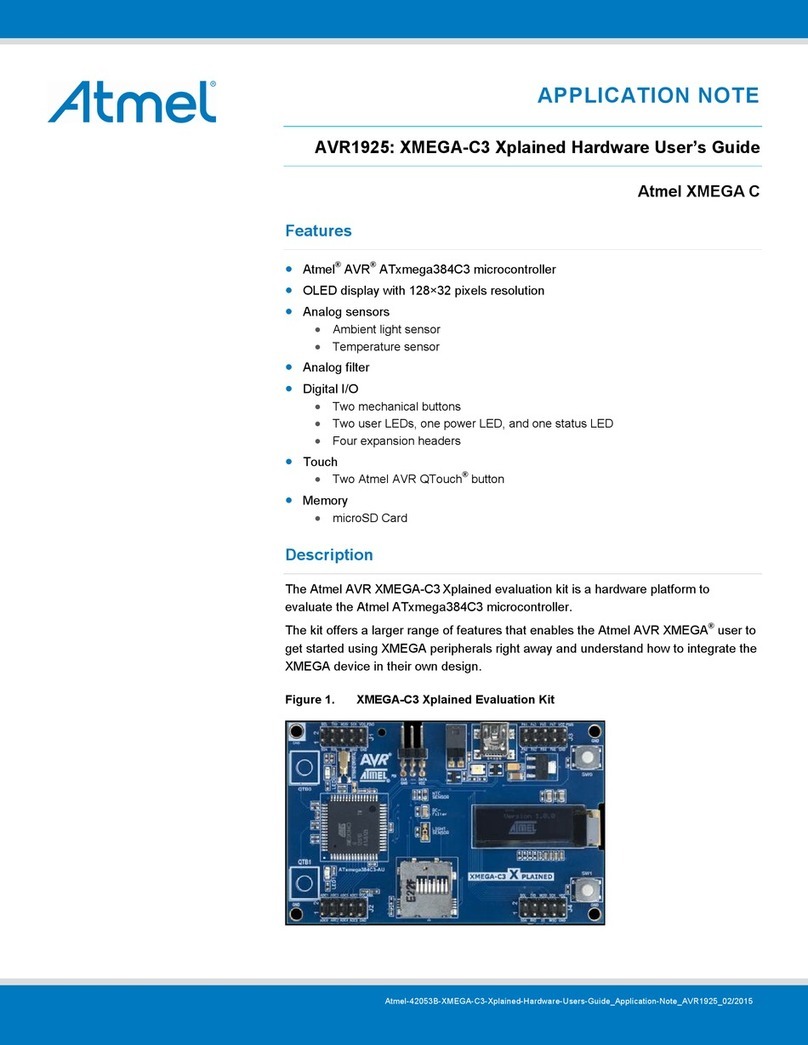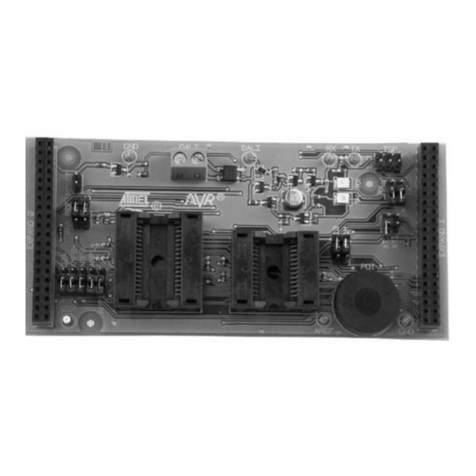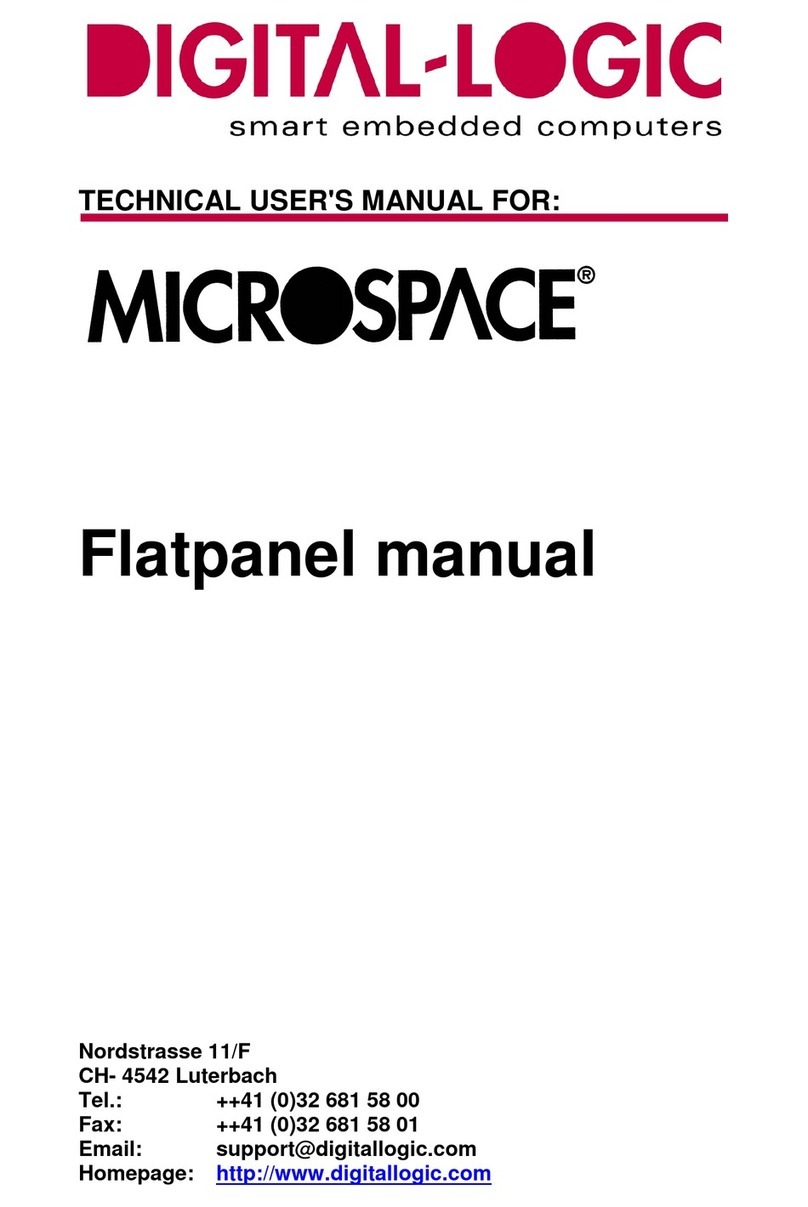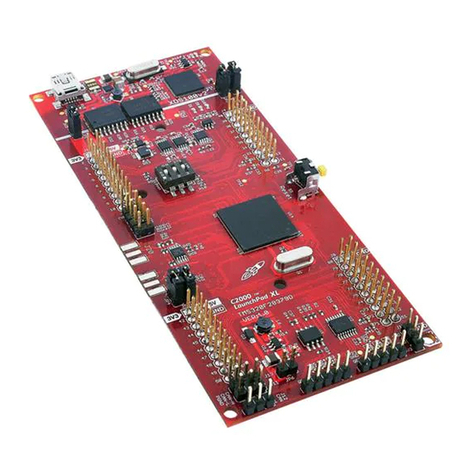
AVR042
7
2521C-AVR-09/05
focus on features and parameters relevant for designing applications where crystals
or ceramic resonators are used rather than trying to be a complete description of the
theory related to the topic.
5.1 Selecting the clock source in the AVR
The clock source used by the AVR is selected through the fuses. Most ISP and
parallel programmers can program the fuses that are related to selecting a clock
source. The fuses are not erased when the AVR memory is erased and the fuses
therefore only require to be programmed if the fuse settings should be altered.
Programming the fuses each time the device is erased and reprogrammed is thus not
necessary. The clock options that are relevant for this document are:
•“Ext. low-frequency crystal”
•“Ext. crystal oscillator”
•“Ext. ceramic resonator”
Several sub-settings relating to the start-up time of the AVR can be selected, but the
3 clock options mentioned are the fundamental settings that should be focused on.
The clock options available can vary between AVR devices, - not all devices have the
ability to run on various external oscillators. Check the datasheet for the relevant
device to determine the clock options.
One should be aware that if selecting a different clock source than is actually applied,
the AVR might not run since different oscillator circuits are activated internally in the
AVR dependent on the selected clock option. Since the fuses are not cleared by a
memory erase, it can cause problems if incorrect settings are chosen.
5.2 General about crystals and ceramic resonators
The typical type of crystal used for the AVR is the AT-cut parallel resonant crystal.
The ceramic resonator is very similar to the AT-cut parallel resonant crystal, but is so
to say a low cost, low quality version of the crystal. The ceramic resonator has a
lower Q-value, which is both an advantage and disadvantage. Due to the lower Q-
value the oscillator frequency of the ceramic resonator can more easily be “tuned” to
a desired frequency, but is also more sensitive to temperature and load changes,
causing undesired frequency variations. The advantage of the ceramic resonators is
that it has a faster start-up than crystals.
In general there will not be distinguished between crystals and ceramic resonators in
this section and the term “resonator” will thus refer to both devices.
Table 5-1. Technical differences between ceramic resonators and quarts crystal
Ceramic resonator Quartz crystal
Aging ±3000 ppm ± 10 ppm
Frequency tolerance ± 2000-5000 ppm ± 20 ppm
Freq. temperature characteristics
± 20-50 ppm/˚C ± 0.5 ppm/˚C
Frequency pullability ± 100-350 ppm/pF ± 15 ppm/pF
Oscillator rise time 0.01-0.5 ms 1-10 ms
Quality factor (Qm) 100-5000 10
3
-5·10
5
